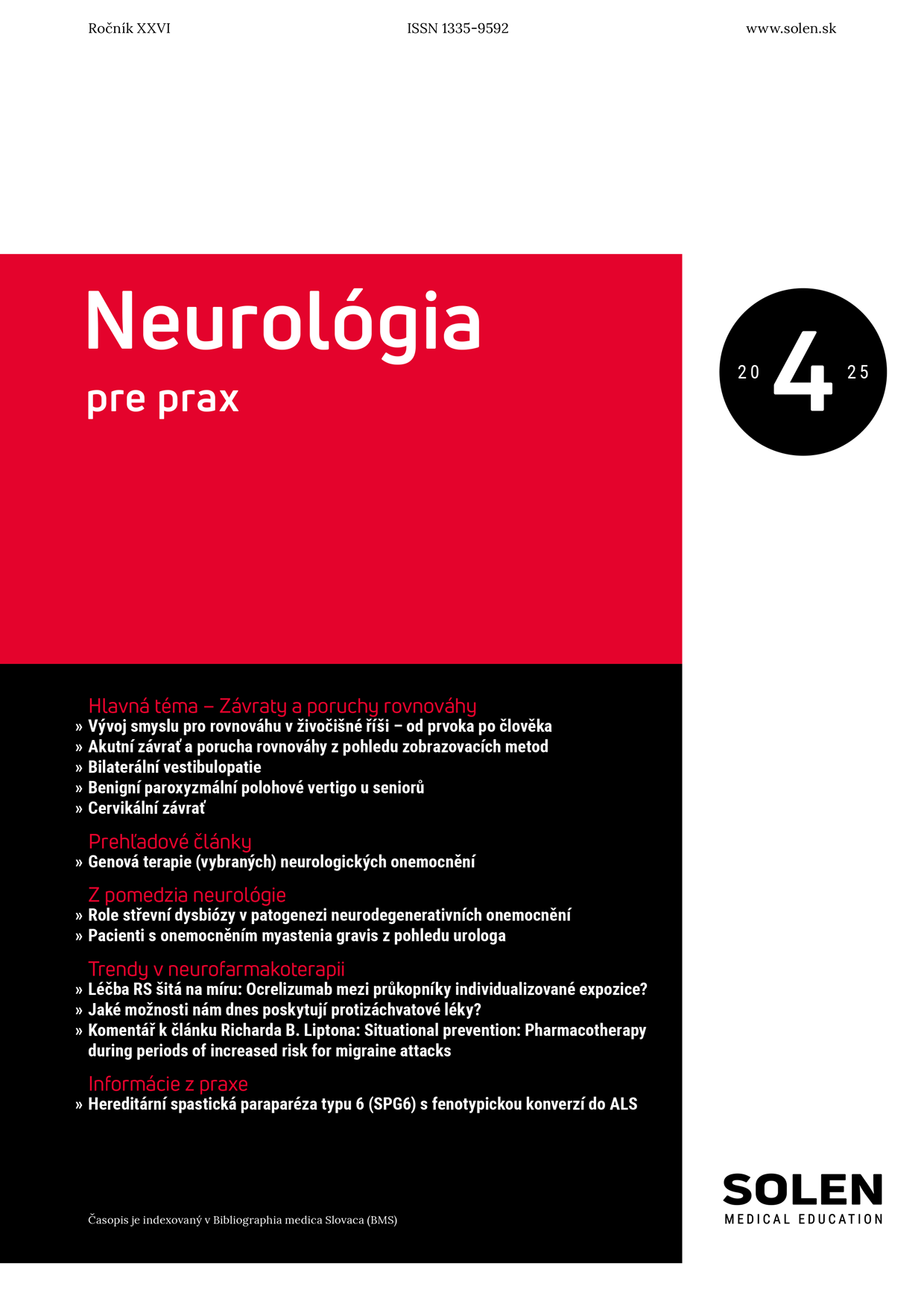Onkológia 3/2014
Skríning karcinómu prostaty vo svetle súčasných poznatkov
prof. MUDr. Peter Bujdák, CSc.
Karcinóm prostaty patrí medzi najčastejšie zhubné ochorenia u mužov vo veku nad 50 rokov. Koncom minulého storočia sa v literatúre objavili prvé údaje o znížení mortality na toto ochorenie z pracovísk, kde sa vykonával skríning. Vo všeobecnosti skríningom nazývame vyhľadávanie určitého ochorenia u asymptomatickej populácie, u ktorej existuje určitá pravdepodobnosť jeho výskytu. Benefit skríningu karcinómu prostaty v súčasnosti nie je známy a je nejednoznačný aj po vyhodnotení The European Randomized Study of Screening for Prostate Cancer (ERSPC). Ako skríningové nástroje sa v urológii používajú digitálne rektálne vyšetrenie (DRV) a hlavne stanovenie hladiny prostatického špecifického antigénu (PSA). Skríningový program zameraný na vysokorizikový karcinóm prostaty môže byť väčším prínosom, ak sa porovná so súčasným skríningom zameraným na všetkých mužov. Jeden z možných postupov je urobiť PSA test všetkým mužom medzi 40. – 50. rokom. Každý muž, ktorý prichádza do ambulancie urológa so žiadosťou o vykonanie skríningových testov na karcinóm prostaty, by mal byť poučený. Ak si želá diagnostiku, treba mu robiť DRV a stanoviť hladinu PSA. Prvé iniciálne stanovenie hladiny PSA by malo byť indikované okolo 40. roku života muža. Horná veková hranica na stanovenie hladiny PSA nie je stanovená, aj keď viaceré práce udávajú vek 75 rokov. Predpokladom odberu by malo byť očakávané dožitie 10 a viac rokov.
Kľúčové slová: karcinóm prostaty, skríning, prostatický špecifický antigén (PSA), digitálne rektálne vyšetrenie (DRV).
Screening of prostate cancer in the light of latest evidence
Prostate cancer is one of the leading malignancies in men older than 50. At the end of the last century the first data declaring the decrease of mortality of the disease appeared in the literature, mainly from the centers where the screening was perfomed. Screening is defined as the application of suitable screening tests to a general population at risk. Benefit of prostate cancer srceening is not known and is ambiguos even after the results of The European Randomized Study of Screening for Prostate Cancer (ERSPC). Screening procerures for prostate cancer in urology usually includes digital rectal examination (DRE) and a determination of prostate specific antigen (PSA) in a serum. Screening programme aimed on high risk prostate cancer could be more beneficial to be compared with the whole population screening. A feasible method should be measuring PSA level in all men between 40-50 of age. Every man, visiting the urologist with the demand of screening for prostate cancer should be properly instructed in the benefits and risks of the procedure. If he still wish to be screened, DRE and PSA level determination should be performed. Initial level of PSA should be determined around the age of 40. The cut off age for PSA level determination is not specified even multiple papers indicate the age of 75. The main anticipation for PSA level determination is life expectancy 10 years or more.
Keywords: prostate cancer, screening, prostate specific antigen (PSA), digital rectal examination (DRE).

















